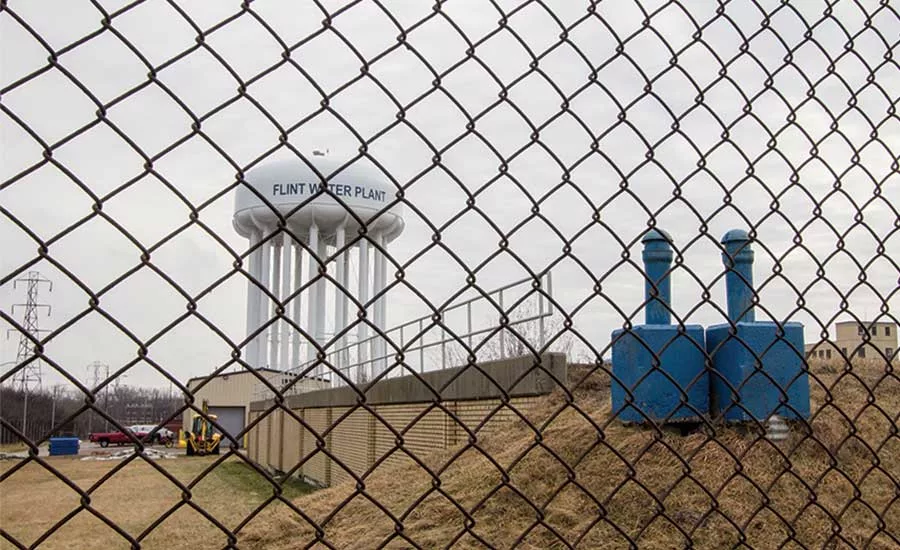5 Tips to Eradicate Lead in Residential Water Systems

Everyone read about how corrosive water in Flint, Mich., caused lead to leach into the residential system. People with residential water wells are not immune, particularly if they live in areas with naturally corrosive groundwater like the Pacific Northwest and have older components in their system.
New information on the location of private wells is helping United States Geological Survey (USGS) scientists inform the public on the importance of water quality testing in areas where potentially corrosive groundwater exists to ensure safe drinking water.
Recently released maps estimate the number of people using private wells in a given area. In regions where scientists have previously identified the likelihood of naturally corrosive groundwater — the Pacific Northwest, along the East Coast and in the southern United States — drinking water from private wells can become contaminated if corrosive groundwater reacts with pipes or fixtures that contain lead or copper.
Though the use of lead-containing solder has been banned since the enactment of the Safe Water Drinking Act of 1986, plumbing that was installed before that time might contain lead. That’s why it’s important to ensure that homeowners know most residential water treatment systems are comprised of replaceable components that require regular service and maintenance.
The Environmental Protection Agency (EPA) has proposed changes to Section 1417 of the Safe Drinking Water Act based on the Reduction of Lead in Drinking Water Act of 2011. The proposed changes will update the definition of lead free to lower the maximum amount of lead content allowed in plumbing products from 8 to 0.25 percent of the wetted surfaces, and create exemptions from these requirements for plumbing products that are used exclusively for nonpotable services.
To ensure individuals purchasing, installing or inspecting potable water systems can identify lead-free plumbing materials, the EPA proposed additional requirements that mandate manufacturers to certify compliance with the lead-free regulations. This ensures products that meet them are differentiated from those that are exempt. The EPA’s proposed regulations would also reduce unintentional use of non-lead-free plumbing products in potable water systems and minimize exposure to lead in drinking water, according to the Office of the Federal Register.
Some manufacturers, including Xylem’s Goulds Water Technology, retooled the manufacturing process of their residential pump products to meet stringent lead requirements well before the EPA’s proposed regulations were announced. In fact, some Goulds Water Technology products have been engineered with stainless steel since 1994 to ensure they contain less than 0.05 percent lead.
As other companies work to update their product lines to adhere to the proposed guidelines in Section 1417 of the Safe Drinking Water Act, plumbing professionals can help homeowners assess if they are at risk for lead exposure.
Many residential water systems operate using older plumbing fixtures and copper water lines that may contain lead in the solder used to bond the pipes. This can pass lead into a home’s potable water supply.
Follow these five steps to help homeowners identify if they’re obtaining safe, clean potable water from their residential well system.
- Audit the Pump System
- Check Service Lines
- Test the Water
- Replace or Update the System
- Consider Residential Water Treatments
Audit the Pump System
Plumbing professionals should thoroughly examine a home’s water system to find potential sources of lead. Start by identifying the materials used to construct the pumps that move water into and throughout the home to ensure they do not contain lead. Then, characterize the material used to connect the pumps to the piping. When doing so, look for solder joints. Prior to 1986, solder was commonly used to connect copper piping in older homes, and it contains lead. Then inspect the fixtures installed in the home. Household fixtures in the bathroom(s) and kitchen may be made of brass or bronze. These materials also contain lead.
Check Service Lines
When lead gets into tap water, it typically happens right before the water enters the home through a service line. Service lines installed before 1986 commonly contained lead-based solder constructed of 50 percent tin and 50 percent lead. For this reason, it’s critical to identify if the pipe providing water to a residential system is made of plastic, copper, lead or stainless steel. This will help plumbing professionals understand if high volumes of lead are seeping into the water before it enters the home’s service line.
To do so, find the water meter located inside or outside of a resident’s home. Then evaluate the material used to construct it. If the pipe is made of plastic, that means it’s likely safe. If it is made of metal, use a key or coin to scratch it and then evaluate the color of the pipe. If the pipe is orange, it likely was made of copper, which usually indicates a lower lead concentration. If the scratched surface is a dull color, it’s likely made of galvanized steel, which can also contain lead. If the surface is shiny, lead is most likely the main material used to construct the pipe. If the pipe is unable to be located, call the municipality to find out what type of service the home runs on.
Test the Water
Even if a home does not use a lead service line or contain pumps made with lead, residents can still have unsafe levels of lead in their water supply due to leaching from the faucet, pipes and other fixtures, especially if they live in a region with potentially corrosive groundwater. The only way to ensure homeowners’ water doesn’t contain harmful quantities of lead is to test it.
When testing the water, measure the lead content to ensure it meets EPA regulations. Water professionals should test more than one water sample. This is because varying amounts of lead may be in different water supplies. Test water samples that come from all major water sources in the home. This should include, but not be limited to, the first draw in the morning and from water streaming from the kitchen and bathroom sinks and shower.
Replace or Update the System
If all or parts of the residential water system contain unsafe quantities of lead, upgrade as needed with lead-free pumping products. To further ensure contaminants don’t make their way into a home’s potable water source, install products that are NSF/ANSI 61-G or NSF/ANSI 372 compliant. This means the product has been tested and evaluated by a third-party testing body to ensure it does not leach contaminants into the water that would be a health concern, and it complies with safe potable water regulations.
Consider Residential Water Treatments
Replacing lead service lines and pumping infrastructure removes lead from the source, but it can be expensive. For this reason, many homeowners elect to have water treatment devices, such as filters, distillers and reverse osmosis units, installed in their homes. It’s critical that plumbing and water treatment professionals install water treatment systems that are NSF/ANSI 53- or NSF/ANSI 58-certified. This ensures the system has been verified to be able to reduce lead to below the EPA action level of 0.015 mg/L.
By itself, naturally corrosive water is not dangerous, but it can cause leaching of metals into the water supply. When lead is present in residential water systems at unsafe levels, it must be eradicated. That’s why it’s important for private well owners to enlist the expertise of water professionals to conduct routine monitoring and maintenance of their residential water systems to ensure health and safety for all.
Looking for a reprint of this article?
From high-res PDFs to custom plaques, order your copy today!




